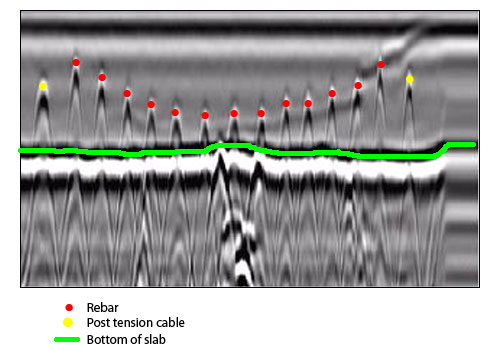Advanced Concrete Scanning Techniques: Ensuring Architectural Stability
Advanced Concrete Scanning Techniques: Ensuring Architectural Stability
Blog Article
Beyond the Surface Area: Leveraging Advanced Concrete Scanning Techniques for Unmatched Accuracy and Insight
Advanced concrete scanning methods have actually emerged as vital devices in this search, providing a glimpse underneath the surface to reveal a world of vital insights. By using innovative modern technologies, experts can reveal anomalies, analyze the condition of concrete frameworks, and make notified choices that form the program of tasks.
Significance of Advanced Concrete Scanning
The relevance of making use of innovative concrete scanning techniques hinges on the unparalleled precision they use for detecting sub-surface anomalies and making sure architectural honesty. By employing advanced technologies such as ground-penetrating radar (GPR), electromagnetic induction, and progressed sonar imaging, construction professionals can delve below the surface of concrete structures with a degree of precision that much goes beyond conventional evaluation techniques. Concrete Scanning. These methods enable the identification of concealed dangers like rebar rust, spaces, avenues, or post-tension wires that can compromise the stability and safety of a structure over time
Additionally, advanced concrete scanning supplies indispensable understandings right into the general condition of a concrete aspect without the requirement for intrusive procedures, minimizing the danger of triggering damage throughout the analysis process. The capacity to identify the exact area and depth of potential concerns permits targeted repairs and upkeep, eventually prolonging the life-span of the framework and optimizing its performance. Fundamentally, the significance of advanced concrete scanning can not be overemphasized in the realm of construction and framework maintenance, where precision and integrity are vital.
Kinds Of Cutting-Edge Technologies

Anomalies and Defect Discovery

Along with GPR, concrete scanning strategies like thermography and impact-echo screening are also effective in finding abnormalities and issues. Thermography utilizes infrared modern technology to identify variations in surface area temperature level, showing possible areas of concern such as delamination or dampness ingress. On the other hand, impact-echo testing involves evaluating acoustic actions to find gaps, cracks, and various other defects within the concrete. By leveraging these innovative techniques, specialists can proactively resolve architectural concerns, guaranteeing the longevity and safety of concrete structures.
Assessing Concrete Problem
Exactly how can engineers accurately assess the problem of concrete structures to guarantee their longevity and security? Various sophisticated concrete scanning techniques are utilized for this objective. Ground-penetrating radar (GPR) is typically made use of to examine the internal framework of concrete, detecting spaces, cracks, and various other abnormalities that may compromise its stamina.
Integrating non-destructive testing techniques with visual inspections allows for a comprehensive evaluation of concrete problem, making it possible for engineers to determine potential concerns early on and apply prompt maintenance or repair work. By leveraging these sophisticated techniques, designers can make sure the long-term longevity and safety of concrete frameworks.
Enhancing Decision-Making Processes
In the realm of framework administration, enhancing decision-making processes is vital for guaranteeing the effective upkeep and durability of concrete frameworks. Improved decision-making procedures in concrete monitoring involve making use of sophisticated scanning techniques to collect comprehensive information on the condition of frameworks. By leveraging modern technologies such as ground-penetrating radar and 3D imaging, stakeholders can make enlightened decisions regarding fixing, reinforcement, or substitute methods.
These progressed scanning methods provide invaluable understandings into find more info the inner structure of concrete, recognizing prospective issues such as spaces, cracks, or deterioration that may not be visible externally. This level of detailed info permits proactive maintenance preparation, minimizing the danger of architectural failings and increasing the overall lifespan of concrete structures.
Moreover, by integrating electronic documentation and analysis tools into the decision-making process, stakeholders can track the evolution of concrete conditions over time, allowing predictive maintenance techniques and Your Domain Name enhancing resource allotment. Ultimately, the integration of advanced concrete scanning methods enhances decision-making processes by giving unmatched accuracy, understanding, and performance in framework monitoring.
Final Thought
In final thought, advanced concrete scanning methods use unequaled precision and understanding in finding abnormalities, flaws, and examining the condition of concrete structures. By leveraging innovative innovations, decision-making processes can be enhanced, bring about even more enlightened and reliable remedies for preserving and repairing concrete infrastructure. These strategies play a crucial duty in making certain the safety and security and long life of concrete structures, making them an essential tool in the field of building and construction and design.
Additionally, advanced concrete scanning provides very useful understandings into the overall condition of a concrete component without the demand for invasive measures, minimizing the threat of triggering damage throughout the assessment blog process - Concrete Scanning. An additional innovative innovation is 3D X-ray scanning, which supplies thorough pictures of the interior framework of concrete, using beneficial details without the requirement for devastating testing. Furthermore, Concrete Cover Meters are made use of to measure the density of concrete cover over support bars precisely. Improved decision-making processes in concrete management involve using innovative scanning techniques to gather thorough data on the condition of frameworks.In verdict, advanced concrete scanning methods supply unmatched accuracy and insight in finding abnormalities, defects, and evaluating the problem of concrete frameworks
Report this page